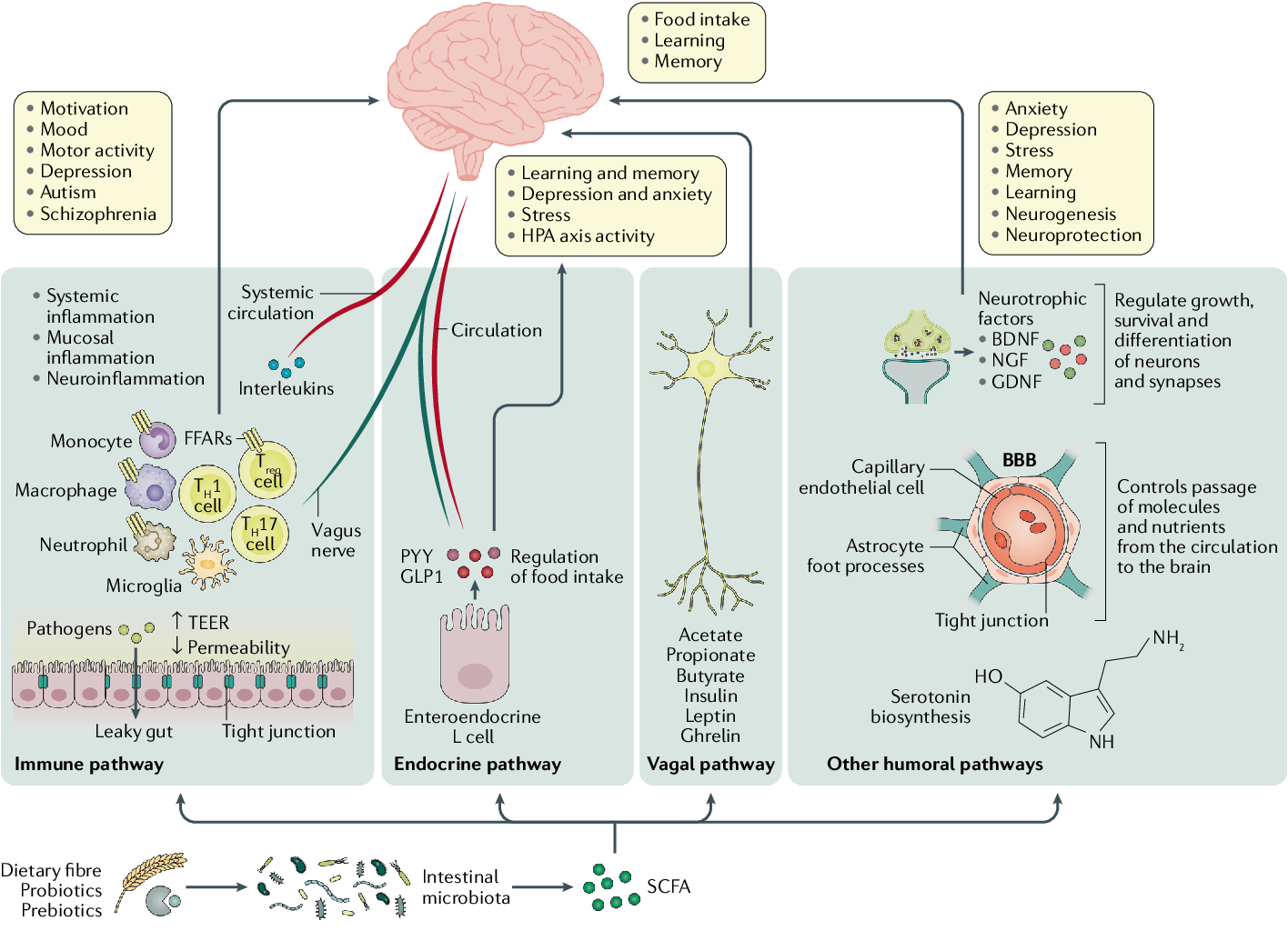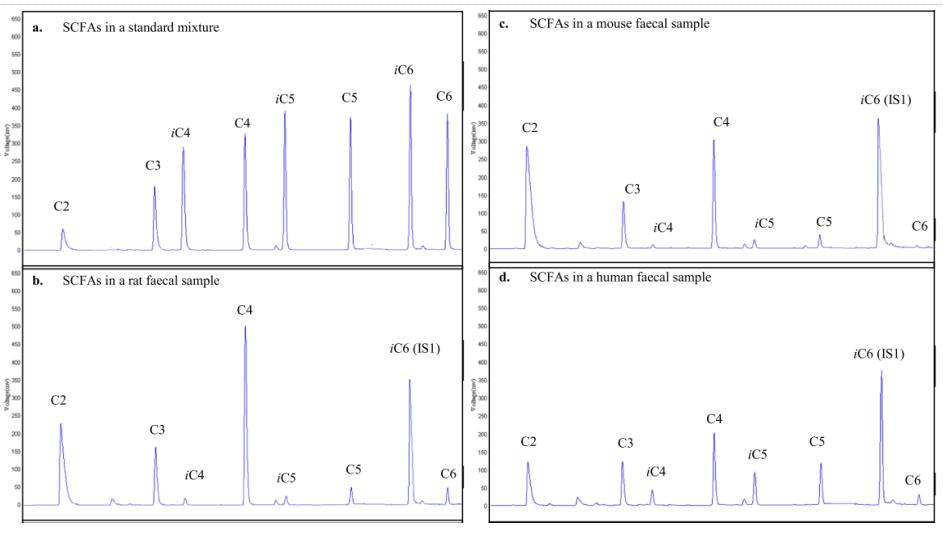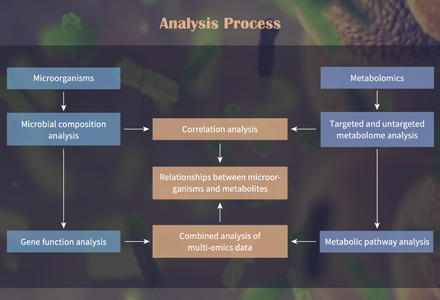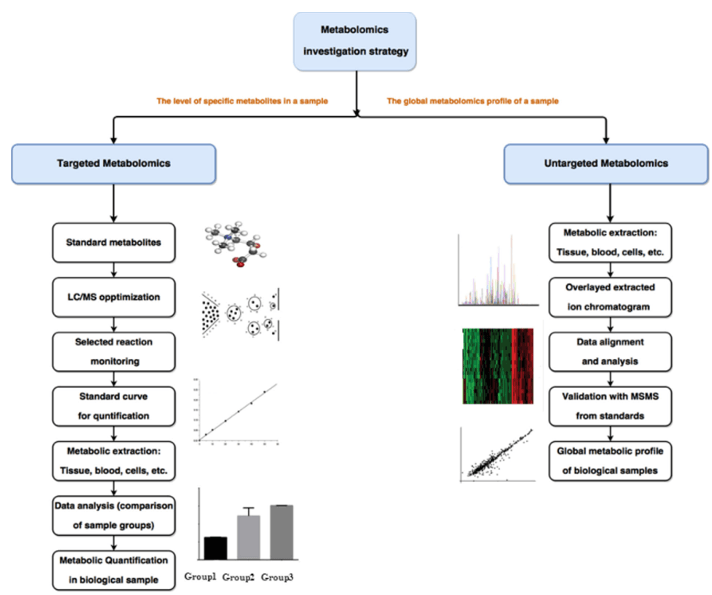What are Short Chain Fatty Acids?
SCFAs are mainly produced by the digestion of indigestible sugars such as dietary fiber, resistant starch, oligosaccharides, etc. in the colon by the fermentation of beneficial bacteria such as lactic acid bacteria and bifidobacteria.
SCFAs are gradually becoming known as signal molecules that regulate diet, intestinal microbes and the host. SCFAs can maintain the electrolyte balance in the intestine, induce cancer cell differentiation and apoptosis, and regulate gene expression. It can improve body composition, glucose homeostasis, blood lipid profile, reduce weight and colon cancer risk. As the main energy substrate, SCFAs can also have anti-inflammatory and anti-cancer effects. It also affects chronic diseases through various mechanisms, and plays an important role in maintaining the metabolic homeostasis of colonic epithelial cells, which can protect the colon from external damage and have a potentially positive impact on colon diseases.
 Potential gut–brain pathways through which sCFas might modulate brain function (Boushra et al., 2019)
Potential gut–brain pathways through which sCFas might modulate brain function (Boushra et al., 2019)
Based on GC-MS and LC-MS technologies, we developed an analysis platform for SCFAs analysis. The external standard method is used to quantify the SCFAs, and the internal standard is used to calibrate the SCFAs, which can achieve the absolute quantity. Our short-chain fatty acid analysis services can be applied to many industries, including biomedicine, pharmaceuticals, agriculture, animal husbandry, food, nutrition and other fields.
Workflow of Short Chain Fatty Acid Analysis
To detect more than 15 short chain fatty acids, we follow the basic process shown below. At the same time, we will adjust the experimental method according to different natures of samples, since Creative Proteomics has developed multiple novel sample preparation techniques.
 Figure 1. Short chain fatty acids analysis service workflow.
Figure 1. Short chain fatty acids analysis service workflow.
Mode: MRM
Precision: pmol
Linear: R2 > 0.99
Analysis content:
- Standard curve creation
- Raw data preprocessing
- Absolute quantification of short chain fatty acids
Equipment for Short Chain Fatty Acid Analysis
- Gas Chromatography-Mass Spectrometry (GC-MS): Agilent 7890A GC coupled with Agilent 5975C MS
- Liquid Chromatography-Mass Spectrometry (LC-MS): Thermo Fisher Scientific Q Exactive series
- High-Performance Liquid Chromatography-Mass Spectrometry (HPLC-MS): Waters Acquity UPLC coupled with Waters Xevo TQ-S MS
- Ion Chromatography-Mass Spectrometry (IC-MS): Dionex ICS-5000+ Ion Chromatography system coupled with Thermo Fisher Scientific Orbitrap MS
List of Detectable Short Chain Fatty Acids at Creative Proteomics
Advantages of Our Short Chain Fatty Acids Analysis Service
- Rich experience, can handle a variety of samples
- Developed advanced analysis platform based on GC-MS and LC-MS technology
- Fast turnaround time, about 1~3 weeks
- Provide flexible statistical analysis and bioinformatics analysis
Sample Requirements of Short Chain Fatty Acid Assay
- Serum / plasma ≥ 100 ul/sample
- Tissue: ≥ 50 mg/sample
- Saliva: ≥ 100 mg/sample
- Fresh feces: ≥ 50 mg/sample
- Freeze-dried feces: ≥ 5 mg/sample
- Cell: ≥ 1×107
- Intestinal contents ≥ 100mg/sample
Quick-freeze in liquid nitrogen and store at -80°C, and send it on dry ice.
Deliverables
- Experimental procedure
- Parameters of liquid chromatography / gas chromatography and MS
- MS raw data files and MS data quality checks
- Short chain fatty acids quantification data
- Custom analysis report
Creative Proteomics offers several approaches to provide short-chain fatty acids analysis service and deliver precise and detailed data and analysis report. If you want to detect other metabolites but have not found them, you can tell us through the inquiry form, and our technicians will communicate with you.
Reference
- Dalile, B., Van Oudenhove, L., et al. (2019). The role of short-chain fatty acids in microbiota–gut–brain communication. Nature reviews Gastroenterology & hepatology, 16(8), 461-478.
Case: Quantitative Analysis of Short-Chain Fatty Acids in Fecal Samples and Fermentation Fluids Using Gas Chromatography
Background:
Short-chain fatty acids (SCFAs) play a crucial role in understanding physiological conditions, dietary impacts, and the effects of supplementation treatments. Accurate quantification of SCFAs in biological samples is essential for gaining insights into various metabolic processes.
Samples:
The study employed rat, mouse, and human fecal samples, as well as fermentation fluids obtained from an in vitro fermentation cycle. The diverse sample set allowed for a comprehensive evaluation of the developed analytical method.
Technical Methodology:
1. Sample Preparation: Samples were suspended in aqueous sulfuric acid and subjected to three consecutive extractions with ethyl ether. Acidification facilitated SCFA extraction by shifting the dissociation equilibrium.
2. Standard Solutions Preparation: Diethyl ether stock standard solutions for each acid were prepared at different concentrations. Internal standard solutions were used to enhance accuracy.
3. Extraction Procedure (Fecal Samples): After thawing, fecal samples were homogenized, acidified, and subjected to three extractions with ethyl ether. The organic phase was collected for analysis.
4. Extraction Procedure (Fermentation Fluids): Fermentation fluid samples were obtained from an in vitro fermentation cycle, acidified, and subjected to three extractions with ethyl ether. The organic phase was collected for analysis.
5. Gas Chromatography Analysis: SCFAs were analyzed using a gas chromatograph equipped with a flame ionization detector. The chromatographic column used was a nitroterephthalic acid-modified polyethyleneglycol (PEG) column.
6. Calibration Curves and Quantification: Calibration curves were constructed for each SCFA, and linearity was assessed. Limits of detection (LOD) and quantification (LOQ) were determined, providing sensitivity for major and minor SCFAs.
7. Recovery and Repeatability Tests: Recovery tests were conducted by spiking samples with standard solutions at known concentrations. Intraday and interday repeatability were assessed for both fecal samples and fermentation fluids.
Results:
Optimal Extraction Conditions: Three subsequent extractions demonstrated a significant increase in SCFA extraction compared to one or two extractions, establishing the optimal extraction conditions.
Method Validation: The developed method exhibited excellent linearity, low LOD and LOQ values, and reliable recovery rates for all analyzed SCFAs in both fecal samples and fermentation fluids.
Application to Samples: The method was successfully applied to analyze SCFAs in rat, mouse, and human fecal samples, as well as fermentation fluids. Detected SCFA concentrations varied, providing valuable insights into the physiological state and dietary influences.
 Chromatograms obtained from the analysis of short chain fatty acids (SCFAs) in a standard mixture
Chromatograms obtained from the analysis of short chain fatty acids (SCFAs) in a standard mixture
Reference
- Scortichini, Serena, et al. "Development and validation of a GC-FID method for the analysis of short chain fatty acids in rat and human faeces and in fermentation fluids." Journal of Chromatography B 1143 (2020): 121972.


 Potential gut–brain pathways through which sCFas might modulate brain function (Boushra et al., 2019)
Potential gut–brain pathways through which sCFas might modulate brain function (Boushra et al., 2019) Figure 1. Short chain fatty acids analysis service workflow.
Figure 1. Short chain fatty acids analysis service workflow. Chromatograms obtained from the analysis of short chain fatty acids (SCFAs) in a standard mixture
Chromatograms obtained from the analysis of short chain fatty acids (SCFAs) in a standard mixture






